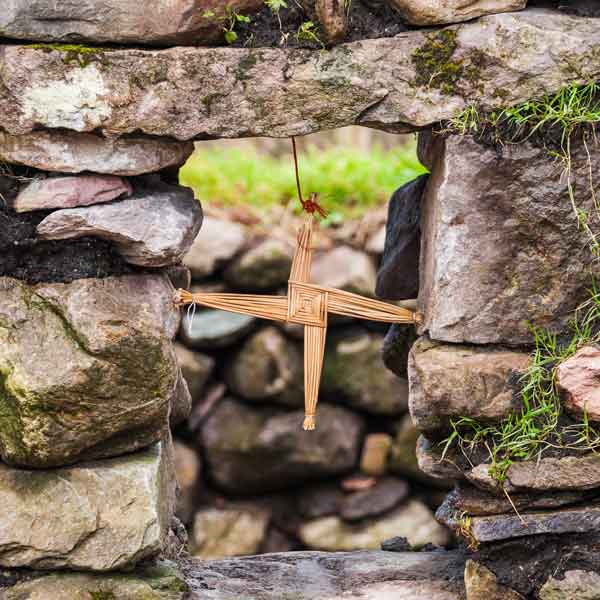While the world has celebrated St. Patrick’s Day for generations, our second patron saint has quietly played second fiddle. Irish school children have long been the main group celebrating St Brigid on her feast day, February 1st. Traditionally primary schools teach students how to make the distinctive St. Brigid’s cross, which is seen on Irish gifts such as jewelry. But now at last, Ireland has declared St. Brigid’s Day a national holiday.
The idea was first floated last year, but 2023 is the first year to see St. Brigid’s Day as an official public holiday, which means it is a paid day off work like St. Patrick’s Day, Christmas and other holidays. Employees will now have the first Monday of February off work, unless the 1st is a Friday, in which case that will be the official holiday.
This is Ireland’s first public holiday in honor of a woman. We could say that Brigid was some woman for one woman, but some would argue that she was more than one woman. It is difficult to untangle the character of Saint Brigid from that of the ancient Celtic goddess Brigid. The saint’s feast day just happens to fall on Imbolc.
Imbolc falls halfway between the winter solstice and the spring equinox. The ancient peoples of Ireland, who paid close attention to the solar calendar, would have considered this a very important day. It’s also the official first day of spring in Ireland, even if the weather rarely cooperates with that notion.
The Legend of St. Brigid’s Cross
The cross that school children weave from rushes (or straw or construction paper or pipe cleaners) follows the design of one she made in a famous legend. In that story, she sits at the side of a pagan Celtic chieftain in the last hours of his life. As he dies, she weaves a cross from the rushes on the floor as she tells him about Jesus, His death and resurrection. Before the chieftain draws his last breaths, he becomes a believer and converts to Christianity.
Today that story is remembered by using Brigid’s distinct squarish cross in all sorts of creative designs – including beautiful Irish gifts. It is a popular pendant. Many Irish homes feature a Brigid’s cross. The styles are diverse. It might be rushes, stained glass or ceramic, but it celebrates one of the most important figures in Irish history.
Brigid’s influence is still strong if subtle. The Irish are known as excellent negotiators, cheerful and shrewd. One of the most famous stories about Brigid involves her negotiating with a chieftain for land to build a convent. After the chieftain refuses, she continues to press him and asks for just as much land as her cape can cover. Laughing, he agrees, then watches in amazement as her cloak grows and grows until it covers acres of land.
Perhaps those very negotiating skills are behind the arrival of our newest public holiday! But one thing is sure, it is faster just to give an Irish woman what she wants the first time she asks.









